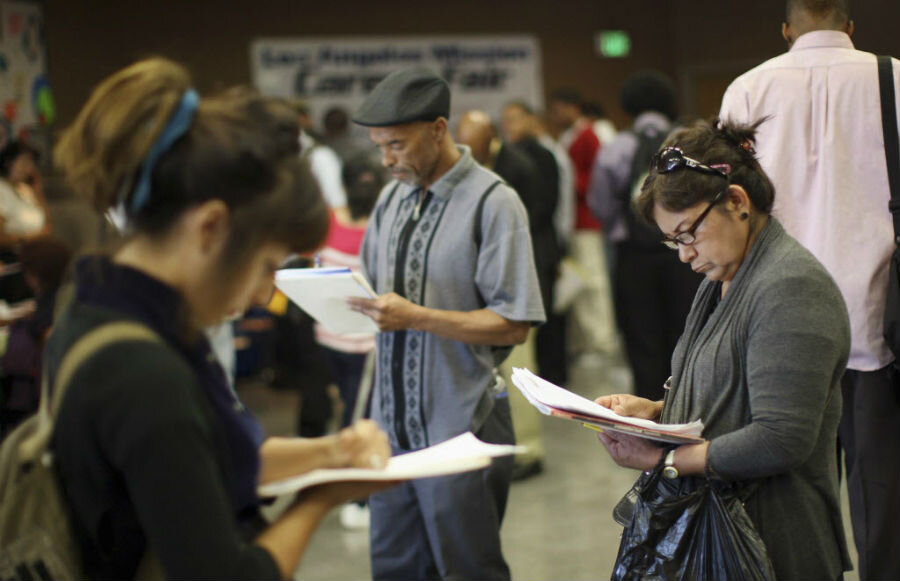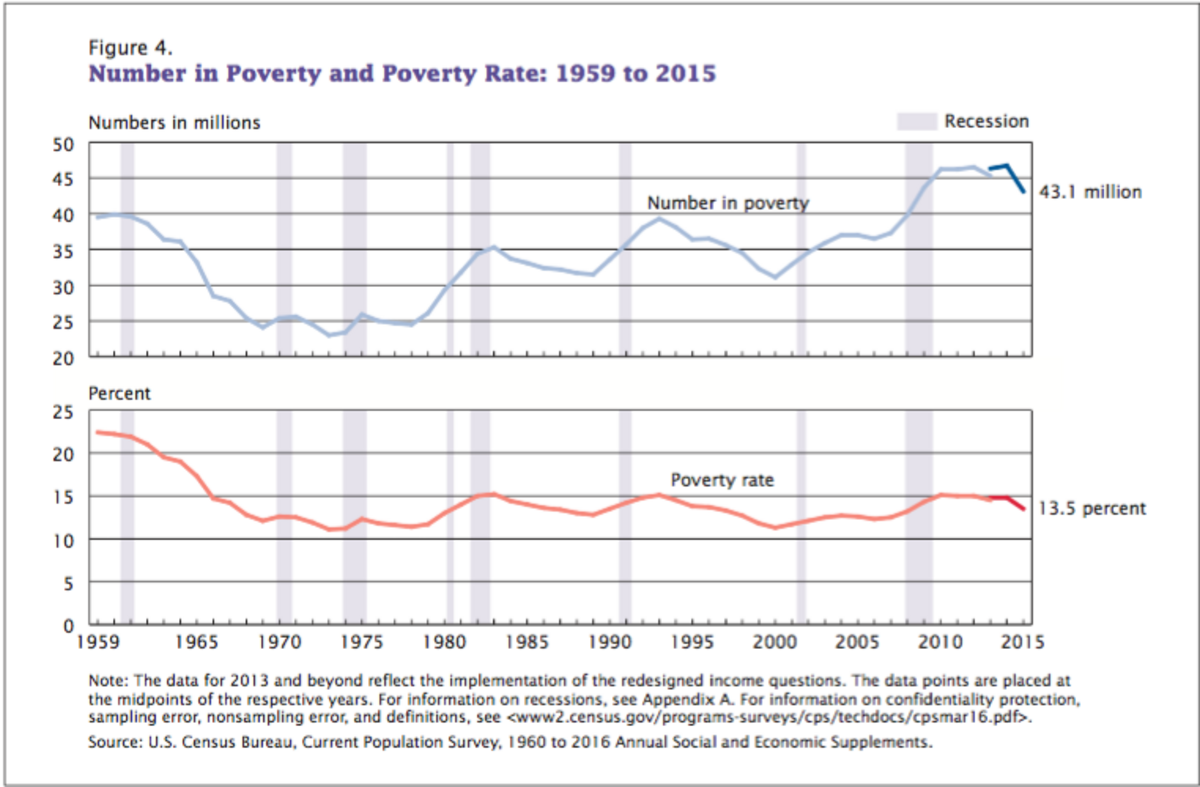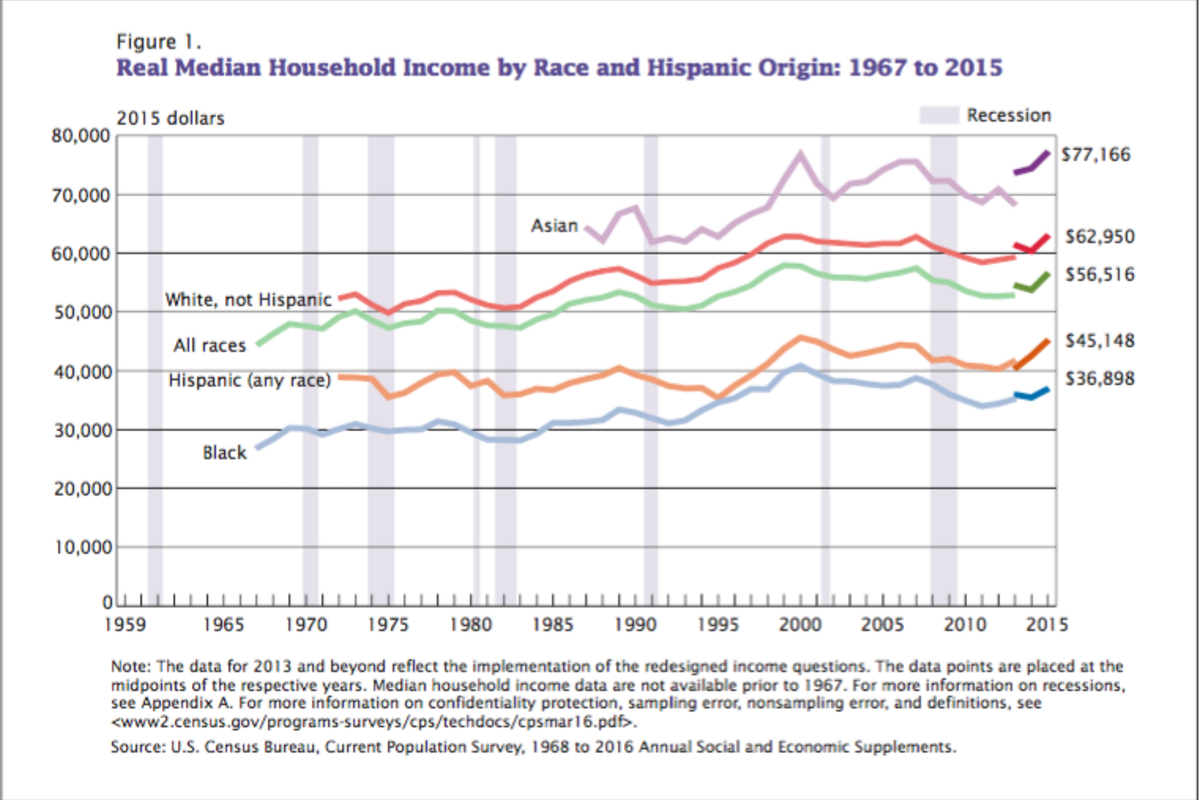At last, hope that US economy has turned a corner
Loading...
On the whole, the United States economy has more than regained its footing in the years since the Great Recession, but that has come with a caveat: Most economic gains have benefited corporations and the nation's wealthy, while the rest of the country has either stagnated or fallen behind.
According to data released Tuesday by the US Census Bureau, that changed in a big way last year. They offer the hope that 2015 could go down on record as the year that lower and middle-income Americans finally started to feel the effects of a years-long economic expansion.
Median household income rose by 5.2 percent from 2014 to 2015 – an upward trend that held across races, regions, and income groups. The typical middle-income household brought home $56,516 last year, adjusted for inflation, compared with $53,718 in 2014. It was the first single-year increase for median household incomes since 2007, according to the Census Bureau.
"This is ... the largest increase over the past 17 years," a blog post announcing the annual Census report reads. "Further, the increase was experienced by householders in nearly all age groups."
On top of this, the poverty rate declined to 13.5 percent in 2015, a 1.2 percentage-point drop from the year before, and the largest one-year decline since 1998 to 1999, reported the Census. An estimated 3.5 million Americans climbed out of poverty last year.
“This one year almost single-handedly got us out of the hole … and that’s worth celebrating,” Lawrence Mishel, president of the liberal Economic Policy Institute think tank, said on a call with reporters Tuesday.
The early years of the recovery were driven primarily by relaxed monetary policy and a booming stock market – things that drove financial gains almost entirely to big businesses and wealthy Americans. In contrast, the more recent years have been characterized by increasing jobs and wages – trends that benefit low- and middle-income earners.
“This shows the importance of robust labor markets,” Jared Bernstein, a former top economic adviser to Vice President Joseph R. Biden Jr., told The New York Times. “If working-age Americans are going to get ahead, it is through a paycheck.”
The growth in 2015 was most acute among people in the bottom 5 percent of earners, who saw their household incomes jump 6.6 percent.
Digging out of a 'pretty deep' hole
Last year's numbers, while impressive, still didn't bring most Americans back to their pre-Great Recession income levels. Since 2007, the bottom 5 percent of households have lost 11 percent of their income, according to EPI. And that trend of dwindling earning power was in motion before the 2008 financial crash: Between 2000 and 2015, the income of households where people were working (non-elderly median households) fell by 8.2 percent, from $69,016 to $63,344.
“We’re digging ourselves out of a pretty deep hole,” said Dr. Mishel. But if 2016 brings the similar levels of growth as last year did, he predicts, “most households will recoup their income losses from the Great Recession.” The wealthiest Americans, on the other hand, have fully recovered from the recession and are now even a few percentage points ahead.
Why the turnaround?
According to an analysis by EPI, there are a few forces that shaped the strong household income growth of 2015 – the likes of which the country hasn’t seen in half a century.
First, the unemployment rate declined from 6.2 to 5.3 percent last year. “We may finally start seeing employers having to compete for workers, which is something we should have every year,” Mishel said.
Additionally, several large employers, like Walmart, hiked their minimum pay rates last year, and a slew of cities and states increased minimum hourly wages. Those changes largely benefitted lower-wage workers, who are most susceptible to getting laid off or getting their hours cut during dips in the economy. Hispanic households saw the biggest increase in their incomes last year (6.1 percent). White and black households' incomes rose 4.4 percent and 4.1 percent, respectively.
Besides the declining unemployment, another major cause for the growth is the virtually flat inflation rate in 2015. This means that the cost of goods and services didn’t rise, as it is supposed to, giving incomes a boost. The flat inflation resulted from declining energy prices that offset the growth in prices of other things.
There are signs that the growth could continue into 2016. While the inflation rate grew to 0.8 percent as of July – getting a little closer to the Federal Reserve’s 2 percent target – it's still low. The unemployment rate also continues to decline, having dipped to 4.9 percent in August.
They key to getting back to a pre-recession America is to keep growing wages and lowering unemployment, according to EPI.








